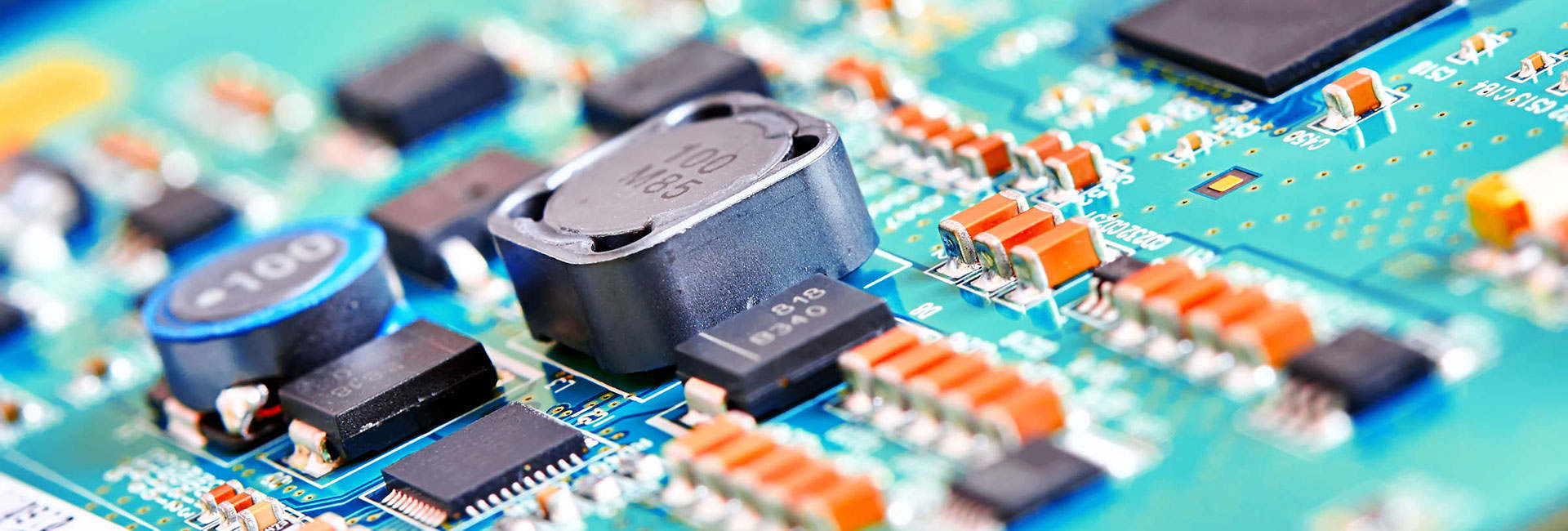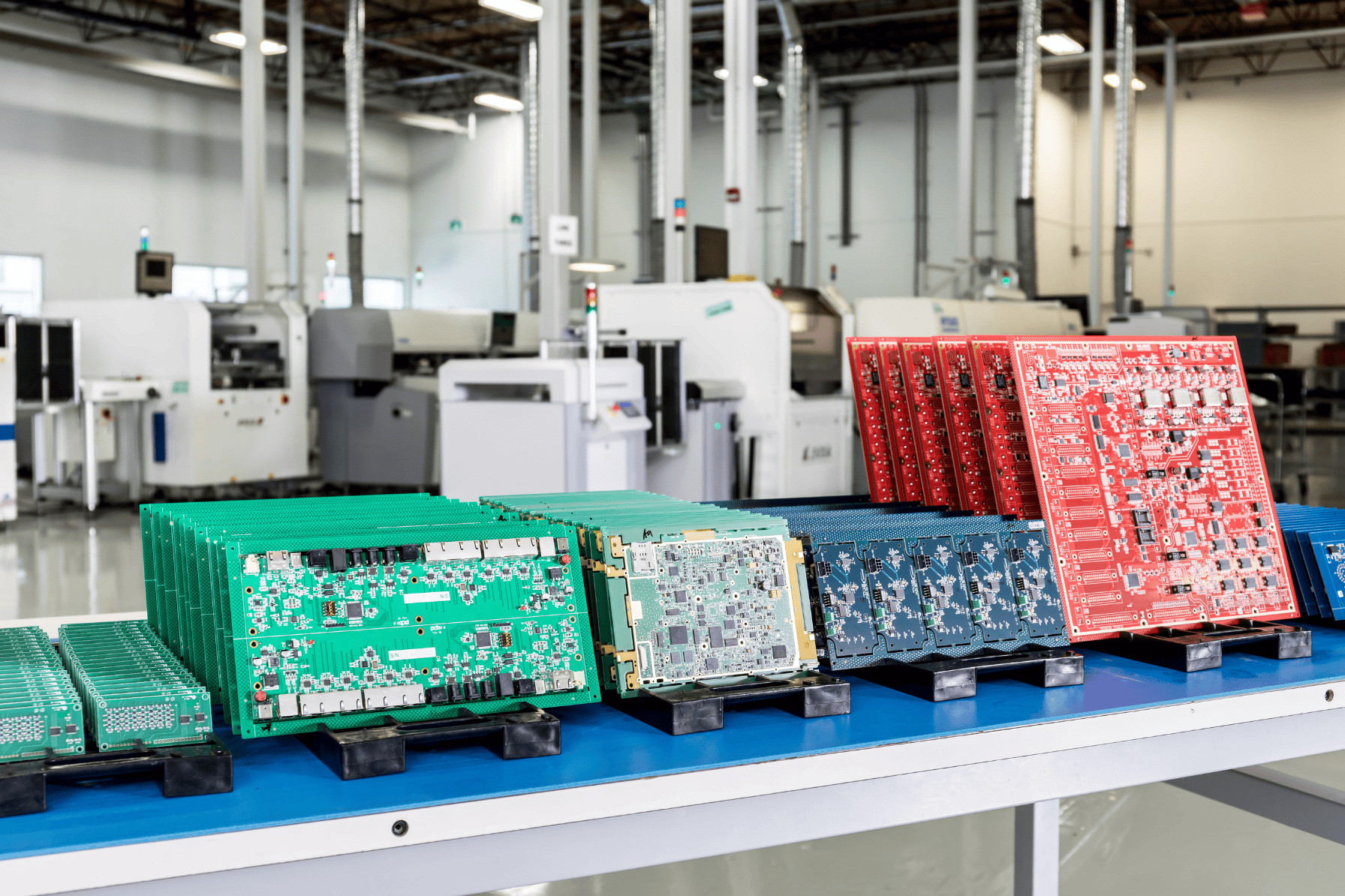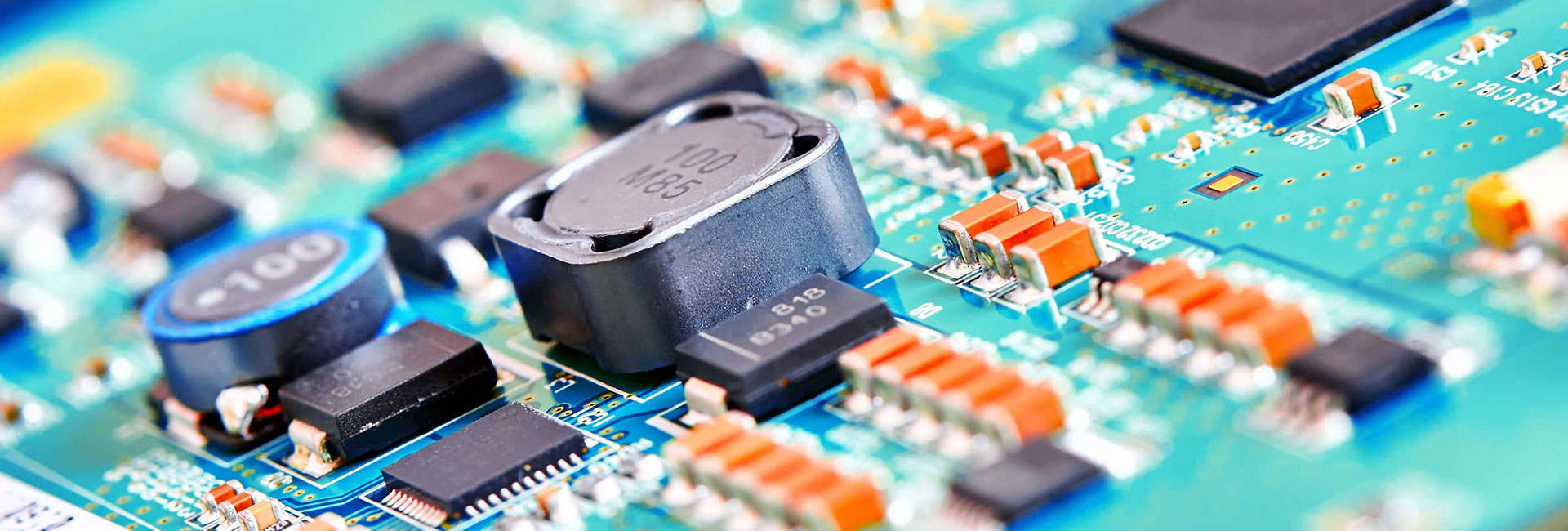
The B2B platform for the best purchasing descision. Identify and compare relevant B2B manufacturers, suppliers and retailers
Close
Filter
Result configuration
Continents
Select continent
Locations
Result types
Company type
Select company type
Industries
Select industry
Company status
Select company status preset
Number of employees
Min.
Max.
Founding year
Components Technology Group
Canada
A
11-50 Employees
2001
Key takeaway
Components Technology Group specializes in sourcing hard-to-find or obsolete electronic components, making it a key resource for those in need of such items. Their services also include full board assembly and cost-saving solutions through bulk purchasing, ensuring on-time delivery to support seamless production processes.
Reference
Core business
Home - Components Technology Group Inc.
Our services encompass the complexities of electronics manufacturing, including sourcing hard-to-find or obsolete components, and full board assembly.
DB LECTRO Inc.
Brossard, Canada
A
1-10 Employees
1987
Key takeaway
DB Lectro is a provider of high-quality electronic components that meet industry requirements, supporting original equipment manufacturers (OEMs) from product development to design across various sectors. They offer customized solutions and inventory management services to help reduce acquisition and storage costs.
Reference
Product
Products - DB Lectro
Fournisseur de composants électroniques et électromécaniques
CB Technology Ltd
Vancouver, Canada
A
- Employees
1994
Key takeaway
CB Technology specializes in the manufacture of electronic components, particularly probe cards for the semiconductor industry. Their expertise in Surface Mount Technology (SMT) and complex Pin Through Hole (PTH) capabilities positions them as a key partner for developing new electronic products.
Reference
Core business
Electronics Manufacturer
Looking for more accurate results?
Find the right companies for free by entering your custom query!
25M+ companies
250M+ products
Free to use
International Electronics Exchange
Canada
A
11-50 Employees
2014
Key takeaway
International Electronic Components (IEC) is a prominent supplier of consumables, equipment, and services specifically for the printed circuit board (PCB) industry. With over 50 years of experience, IEC has established itself as a trusted expert and has formed valuable partnerships that enhance its offerings to PCB manufacturers across North America.
Reference
Product
International Electronic Components | Equipment
International Electronic Components Inc. (IEC) is a leading supplier of consumables, equipment, and services to the printed circuit board industry in both Canada and the United States. International Electronic Components Inc. @ copyright 2023
RedRing
Laval (administrative region), Canada
A
1-10 Employees
2013
Key takeaway
RedRing Electronics is a key player in the global electronic components market, addressing shortages and obsolescence with a focus on quality control and timely delivery. Their approval as a vendor for numerous customers, including Fortune 500 companies, underscores their reliability and commitment to the electronics industry.
Reference
Core business
RedRing Sales Inc. – Supply Chain Continuity
Quantum First Automation Inc
Mississauga, Canada
A
11-50 Employees
2008
Key takeaway
Quantum First Automation Inc. is a prominent electronic components distributor that specializes in providing high-quality electrical components and industrial automation parts. Their commitment to thorough testing and reliable services ensures customer satisfaction, making them a valuable resource for specific electronic component needs in the US and Canada.
Reference
Core business
Electronic Components Distributor - Quantum First Automation Inc
Quantum First Automation is a prominent provider of industrial automation and control products, as well as electrical and electromechanical components, and we also repair electronic parts. You will benefit from competitive pricing, simple online purchasing, and in-house technical support.
ITC Electrical Components
Richmond Hill, Canada
A
11-50 Employees
1994
Key takeaway
ITC Electrical Components specializes in providing high-quality electrical components for control and automation systems, with a commitment to low prices and fast service. Their products, sourced from reputable manufacturers and often exceeding international standards, ensure reliability and performance for various applications.
Reference
Core business
Home - ITC Electrical Components
Electro Source
Canada
A
11-50 Employees
-
Key takeaway
Electro Source is a prominent electronics technology sales organization in North America, representing a select group of leading partners, which enhances their sales team's ability to deliver unique value to customers.
Reference
Core business
Electro Source Inc. – Electronics, EDA, ESI, Software Systems

Trinity Electronics Systems Ltd.
Edmonton, Canada
A
1-10 Employees
1984
Key takeaway
The company offers comprehensive services in electronic circuit design and product development, specializing in manufacturing equipment for electric utilities. Their product lineup includes Power System Monitors, Fault Recorders, and Voltage Transducers, showcasing their expertise in innovation and electronics engineering.
Reference
Core business
electronic-design - Trinity Electronics Systems Ltd
CE3 Electronics Inc.
Dieppe, Canada
A
51-100 Employees
-
Key takeaway
CE3 Electronics specializes in the design and manufacture of electronic components, including microprocessor-based control systems, power supplies, and data collection devices. They also excel in PCB layout and the production of complex cable and wire harnesses, ensuring high-quality products that meet client specifications.
Reference
Core business
Home - CE3 Electronics
Technologies which have been searched by others and may be interesting for you:
A selection of suitable products and services provided by verified companies according to your search.

Service
Automotive Engineering
Go to product

Service
Custom Electronics
Go to product

Service
PCB assembly
Go to product
A selection of suitable use cases for products or services provided by verified companies according to your search.

Use case
Custom Electronic Design
automotive, E-mobility, automation, industrial automation, machinery, industrial machinery, smart industry, industry 4.0
Electronic design frameworks Electronic design starts from the component layout specification. Also, it consists in the definition of interconnections and PCB technology. Finally, component selection is formalized (BOM, Bill of Material), such as the circuit schematics and the layout of PCB traces (gerber file). If the Electronc Systems is composed of multiple circuit boards, electronic design includes the description of the interconnection schemes, and the instructions for the wiring manufacturing. Adgenera develops electronic circuits tailored and suitable for any application. It selects the most valuable technology for the peculiar field of application, in order to ensure the maximum reliability. Electronic design frameworks Custom-designed electronic solutions can be found in many sectors, covering various fields of application and meeting Client needs. The most frequent requests are: design “from the scratch” miniaturization of an existing circuit board cost Reduction electronic board update, when components are no longer available engineering a prototypal board, either partially or completely working functional improvement (for example, adding a wireless interface) performance improvement (for example, power consumption reduction) Other elements increase the complexity of the electronic design: legacy firmware for the previous version of board need for a custom / legacy interface to other electronic existing systems availability of the components on the market within a certain amount of time project constraints due to standards or certifications The steps of the Electronic Design Electronic design aims to respond to the request of designing and producing electronic circuit boards. First, the customer is interviewed on the characteristics of the electronic system to be designed.. The customer is actively involved to identify the best design choices. This preliminary phase leads to the correct identification of development times and costs, allowing the customer to verify the compliance with his needs and to create a preliminary project planning. Now the electronic scheme can be designed. Specific skills of our designers are applied to correctly select and size the components. Once the scheme has been designed, the electronic components available on the market are selected. Then, they will be soldered to the electronic board during its production phase. We select the most suitable package of components depending on the layout, the space available and the type of application. This design phase leads a draft of the BOM (Bills of Materials) necessary to supply and solder the right components. The electronic components chosen are placed on the board surface. Their positions strictly match design constraints principles to guarantee the correct functioning of the electronic system. Usually several alternative arrangements are evaluated. Finally, the chosen one is the one that leads to the best result once the electronic card is produced. Once the components are finally placed in the board, it is necessary to draw the connections (tracks) that appropriately connect the pins of the components themselves. The tracks design needs to follow many rules and best practices: although there are infinite ways to connect the chosen components, only a few solutions guarantee a good quality card. The preliminary electronic design project is ready: the first board samples are created to check the functionality and performance of the designed electronic system in the laboratory. During the tests, the laboratory instrumentation verifies that each quantity measurable on the card corresponds to the value theoretically calculated during the electronic scheme design.

Use case
Custom Electronic Design
automotive, E-mobility, automation, industrial automation, machinery, industrial machinery, smart industry, industry 4.0
Electronic design frameworks Electronic design starts from the component layout specification. Also, it consists in the definition of interconnections and PCB technology. Finally, component selection is formalized (BOM, Bill of Material), such as the circuit schematics and the layout of PCB traces (gerber file). If the Electronc Systems is composed of multiple circuit boards, electronic design includes the description of the interconnection schemes, and the instructions for the wiring manufacturing. Adgenera develops electronic circuits tailored and suitable for any application. It selects the most valuable technology for the peculiar field of application, in order to ensure the maximum reliability. Electronic design frameworks Custom-designed electronic solutions can be found in many sectors, covering various fields of application and meeting Client needs. The most frequent requests are: design “from the scratch” miniaturization of an existing circuit board cost Reduction electronic board update, when components are no longer available engineering a prototypal board, either partially or completely working functional improvement (for example, adding a wireless interface) performance improvement (for example, power consumption reduction) Other elements increase the complexity of the electronic design: legacy firmware for the previous version of board need for a custom / legacy interface to other electronic existing systems availability of the components on the market within a certain amount of time project constraints due to standards or certifications The steps of the Electronic Design Electronic design aims to respond to the request of designing and producing electronic circuit boards. First, the customer is interviewed on the characteristics of the electronic system to be designed.. The customer is actively involved to identify the best design choices. This preliminary phase leads to the correct identification of development times and costs, allowing the customer to verify the compliance with his needs and to create a preliminary project planning. Now the electronic scheme can be designed. Specific skills of our designers are applied to correctly select and size the components. Once the scheme has been designed, the electronic components available on the market are selected. Then, they will be soldered to the electronic board during its production phase. We select the most suitable package of components depending on the layout, the space available and the type of application. This design phase leads a draft of the BOM (Bills of Materials) necessary to supply and solder the right components. The electronic components chosen are placed on the board surface. Their positions strictly match design constraints principles to guarantee the correct functioning of the electronic system. Usually several alternative arrangements are evaluated. Finally, the chosen one is the one that leads to the best result once the electronic card is produced. Once the components are finally placed in the board, it is necessary to draw the connections (tracks) that appropriately connect the pins of the components themselves. The tracks design needs to follow many rules and best practices: although there are infinite ways to connect the chosen components, only a few solutions guarantee a good quality card. The preliminary electronic design project is ready: the first board samples are created to check the functionality and performance of the designed electronic system in the laboratory. During the tests, the laboratory instrumentation verifies that each quantity measurable on the card corresponds to the value theoretically calculated during the electronic scheme design.
When exploring the electronic component industry in Canada, several key considerations emerge. Regulatory compliance is crucial, as the industry is governed by standards set by organizations such as Industry Canada and the Canadian Standards Association. Companies must navigate these regulations while ensuring product safety and quality, which can pose challenges. The competitive landscape is characterized by a mix of established players and emerging startups, making it essential to identify unique value propositions and market niches. The Canadian electronic component sector benefits from a robust technological infrastructure and a skilled workforce, presenting various opportunities for innovation and growth. Additionally, Canada’s commitment to sustainability means that environmental concerns are increasingly relevant, with companies urged to adopt eco-friendly practices and materials. Moreover, the global market relevance of Canadian electronic components continues to grow, driven by advancements in areas such as telecommunications, automotive electronics, and renewable energy technologies. Understanding international trade agreements and market access can provide significant advantages for businesses looking to expand. Overall, thorough research into these factors can enhance strategic decision-making for anyone interested in this dynamic industry.
Some interesting numbers and facts about your company results for Electronic Component
| Country with most fitting companies | Canada |
| Amount of fitting manufacturers | 189 |
| Amount of suitable service providers | 154 |
| Average amount of employees | 11-50 |
| Oldest suiting company | 1984 |
| Youngest suiting company | 2014 |
Some interesting questions that has been asked about the results you have just received for Electronic Component
What are related technologies to Electronic Component?
Based on our calculations related technologies to Electronic Component are Water/Ocean Cleaning Technologies, Waste Management, Renewable Energy, Sustainable Fashion, Smart Grid
Which industries are mostly working on Electronic Component?
The most represented industries which are working in Electronic Component are Electronics and Electrical engineering, Other, IT, Software and Services, Semiconductor, Wholesale
How does ensun find these Electronic Component Suppliers?
ensun uses an advanced search and ranking system capable of sifting through millions of companies and hundreds of millions of products and services to identify suitable matches. This is achieved by leveraging cutting-edge technologies, including Artificial Intelligence.